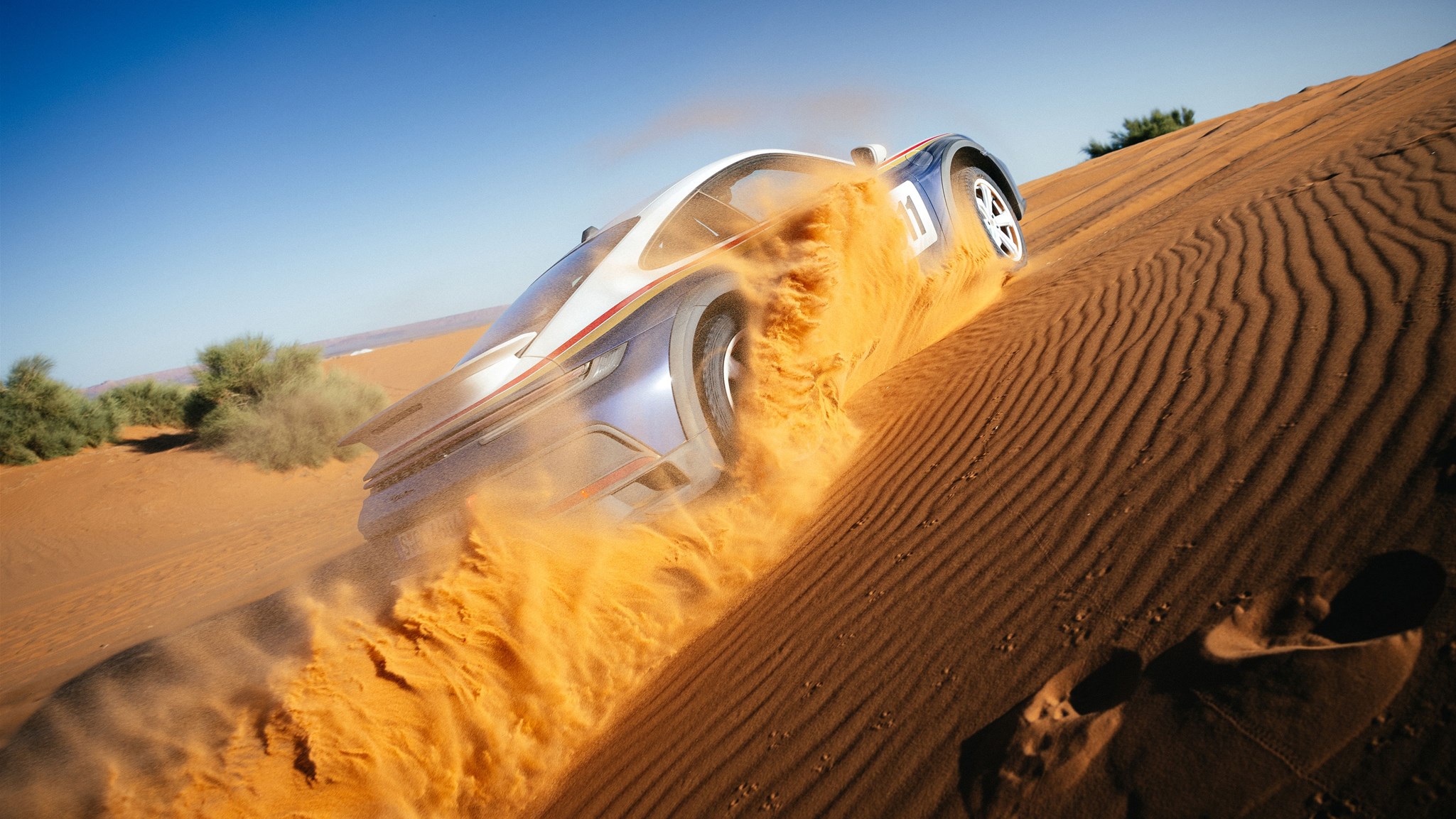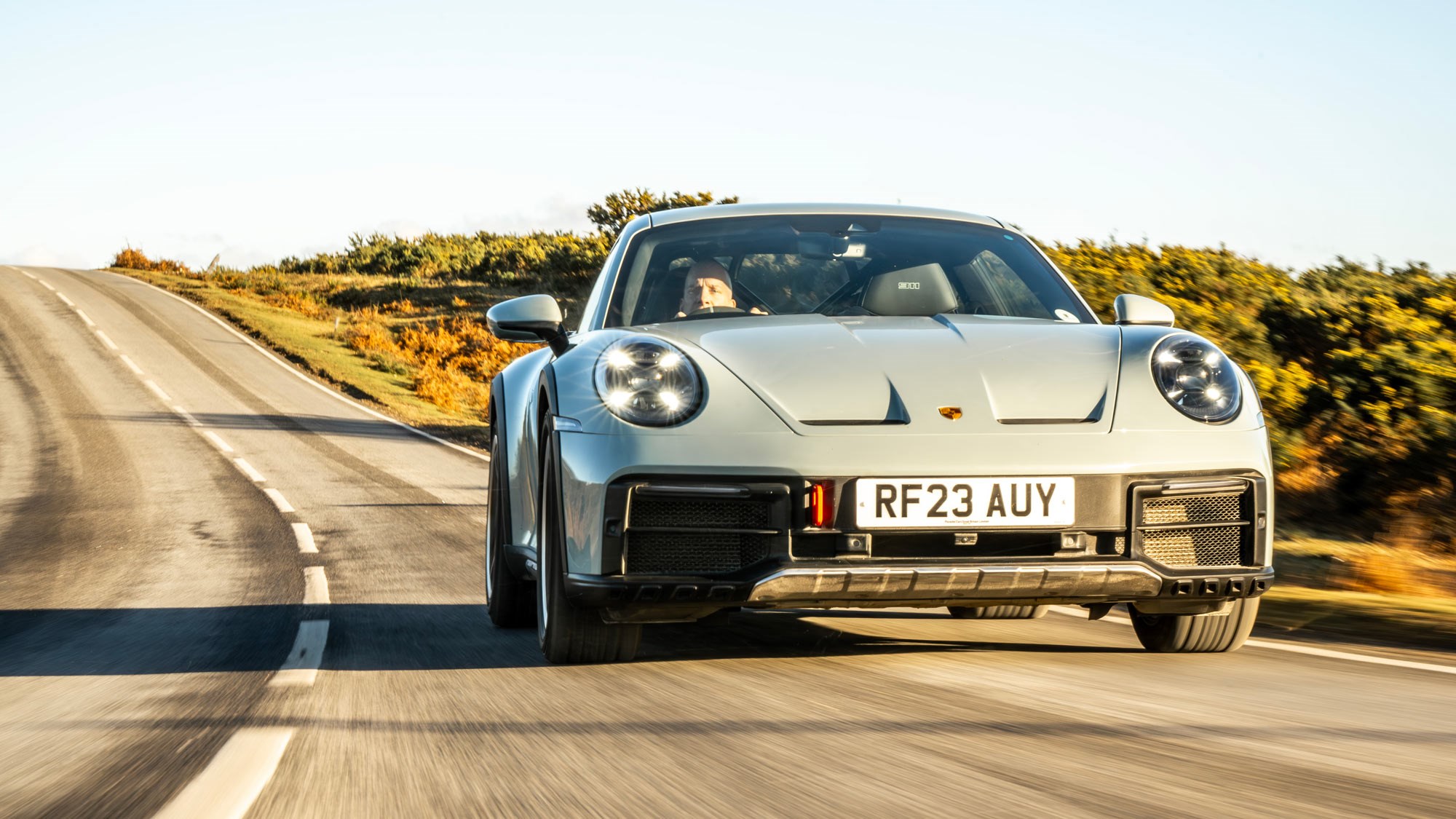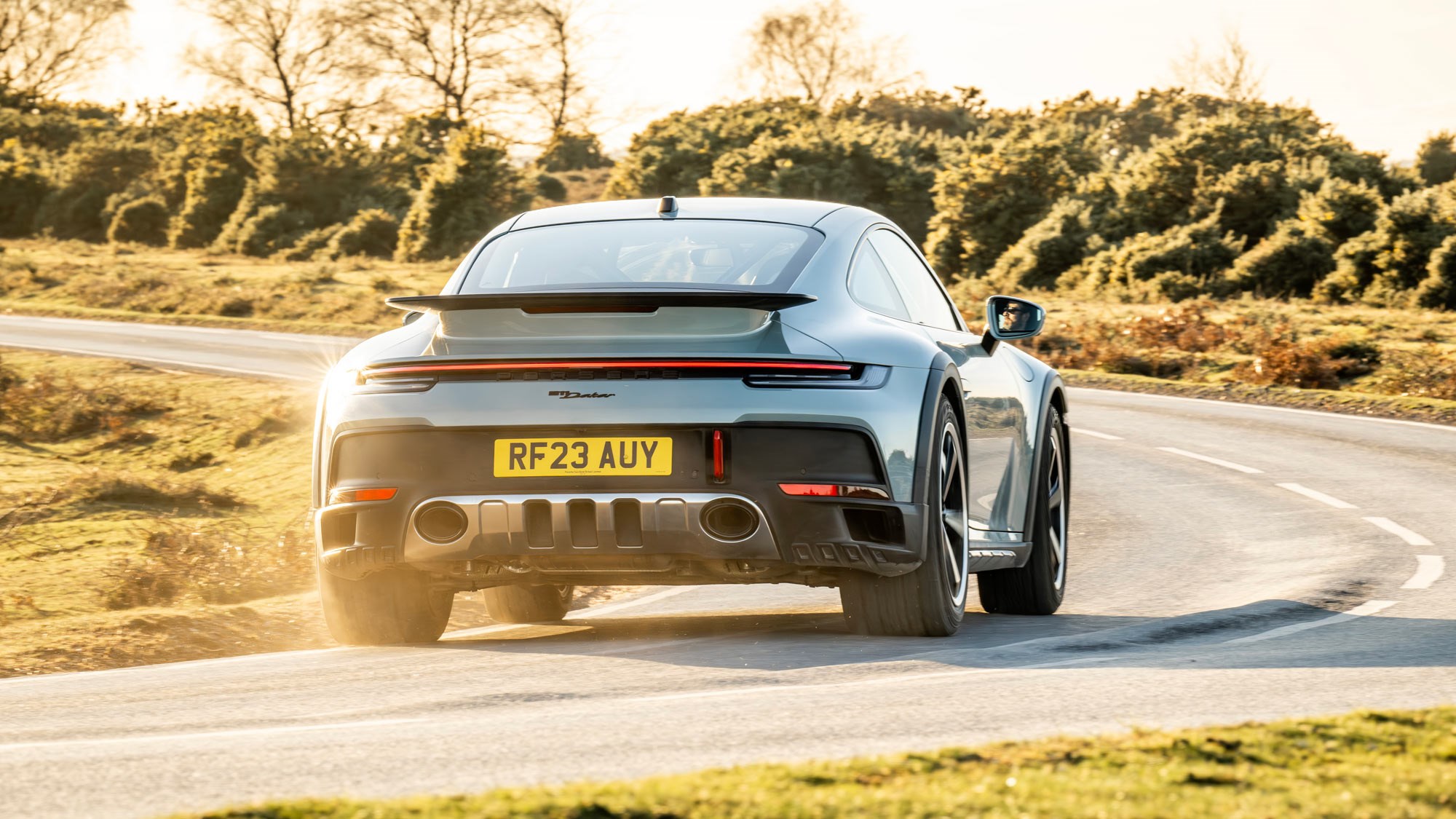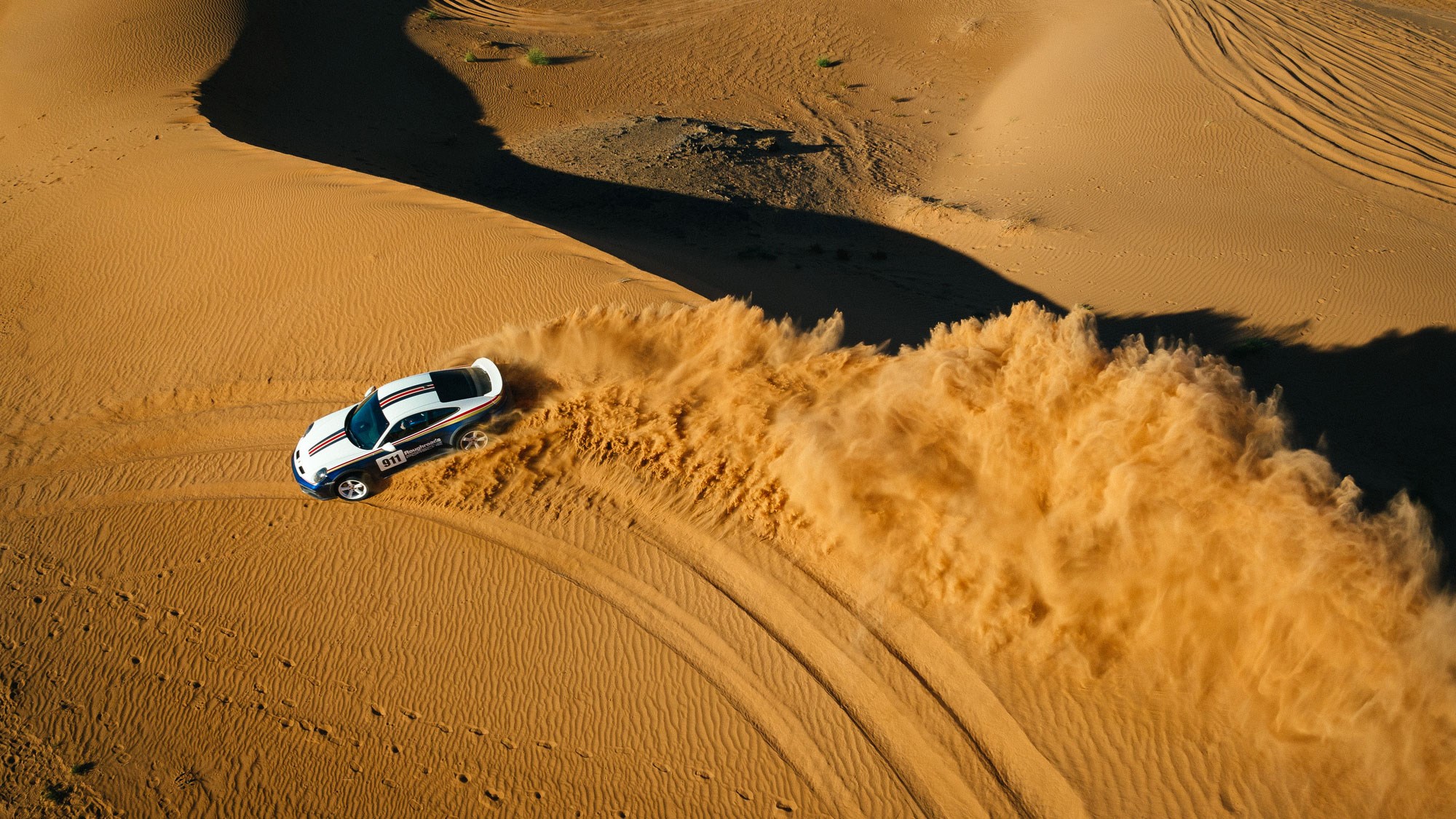► 911 Dakar reviewed on road – and in the desert
► Based on Carrera 4 GTS, price hiked to £173k
► But why does it exist? And is it any good?
This is the worst-kept secret in Porsche development history. After years of rumour and months of unmistakable spyshots – you can wrap a 911 in as much camouflage as you want, but you’ll never hide an 80mm ride height increase – the Porsche 911 Dakar has rearranged our understanding of what a 911 can and should be capable of. We’ve driven it, on road and off.
The answer to a question no one asked? Potentially. While based on the ‘humble’ Carrera 4 GTS, the Dakar-ification of the 911 has swelled the price to an impressive £173,000.
Were Stuttgart planning to shift tens of thousands of them, that might be an issue. But it isn’t. Porsche loves to build (at least) one less car than the market demands, and in this instance it’s taken that approach to extremes. Just 2500 911 Dakars will be built, in total.

Just when you thought the idea of an off-road-ready 911 couldn’t get any more niche, you realise seeing one in the wild will be a once-in-a-lifetime occurrence. And if you haven’t already bought one, it’s almost certainly too late.
So, are we missing out? Our Porsche 911 Dakar review has the answers…
Has Porsche ruined the 911 as a road car?
Before driving the 911 Dakar, my hope was that it might feel like a posh Ariel Nomad. That car rides rough tarmac beautifully and, thanks to the generous bodyroll and low grip threshold of its off-road-biased wheels and tyres, it’s a blast to drive on any surface, drifting into, through and out of corners with so little effort you could do it in your sleep (not recommended).

Has a 50% reduction in spring rate, a 50mm ride height increase (another 30mm can be had via the pneumatic lift kit, an uprated, high-pressure version of the standard 911 nose lift modified to work on both axles) and a set of chunky bespoke Pirelli Scorpion tyres Nomad-ified the 911?
Initially we had no idea. While we covered road miles on the original launch event in Morocco, they were largely arrow-straight and zealously policed. The Pirellis are seriously rugged boots, however, and even here the Dakar fidgets on rough tarmac at low speed, even if road noise is mercifully a good deal less than one of those ‘One life, live it’ mud-plugging Defenders you see howling down the M1.
Now, though, we’ve grabbed some time behind the wheel here in the UK. And though we can confirm the ride works better at speed (as it does off-road, too), the Carrera 4 GTS is, quite predictably, the better bet for sustained tarmac use. Despite the extra travel, the Dakar is firm – and noisy with it. With not much of an interior, this is at times like travelling in a less comfortable GT3. For better or worse, when the tyres are cold and the boost is keen you need to be alert as well, since it’s certainly not shy about going sideways with very little provocation. The stability control will probably collect you, but only after allowing the rear end to swing in a manner that will either thrill or terrify you.

With a more measured right foot the 911’s stability is at less affected by its newfound dual-purpose remit. The standard-fit rear-wheel steering (other standard-fit features include lighter, stronger GT3 engine mounts and Porsche’s anti-roll control system) usefully tightens the turning circle at low speed, but the bigger win is its ability to enhance stability at higher speeds (even when you crank a rear-engined sports car up on high-rise suspension, and possibly fit a roof tent…) by turning the rear wheels in the same direction as the fronts.
Right. So far, the Porsche 911 Dakar appears to have gone backwards for more cash…
Well, yes. But wait. We’ve also driven the Dakar in Morocco, remember, which is something of an off-road Utopia. Every road runs through silent wilderness, and every road is scarred at regular intervals with tyre marks that suddenly arc from safe, easy tarmac to wild, unpredictable desert, the myriad tracks that zigzag to the horizon testament to the desert’s wondrous if slightly sinister siren call. And so without hesitation we turn off the tarmac and into the desert, kicking off with some fairly flat tracks and low-lying pools of sand.
This is more like it. The 992-gen 911 bodyshell may not have been reinforced in any way for the Dakar but the car feels tight as a drum as we up the pace, knock the stability control back to Sport and select one of the Dakar’s two bespoke drive modes, Offroad. This pegs the variable front/rear torque split at a nominal 50:50 for maximum traction and raises the suspension to its highest position.

The four-wheel drive’s soon pulling off minor miracles every 100 yards or so, the flat-six pulling hard regardless of revs and keeping this incongruous off-roader moving even as the sand deepens and this clueless pilot mostly does the wrong thing at precisely the wrong moment.
We glide between tufts of elephant grass and skeletal, long-dead trees, filling the air with dust, sand and, where the car’s underbelly (armoured to an extent with CFRP-reinforced panels) clonks off the landscape, expletives. What’s more, we don’t get stuck. And, even as I sweat, I’m smiling.

How is this delicate road-based two-seater still on one piece? Approach, breakover and departure angles are impressively un-terrible for an adapted sports car, helped at the front by the deletion of the main central radiator. (Uprated rads on either side, with more powerful fans, borrowed from the 911 Turbo, more than cancel the deficit.)
And while you’re pummelled at times like an avocado in a Nutribullet, you’re grateful for the standard-issue fixed-back carbon bucket seats and reassuring (optional) rollcage.
Will it boogie?
Yep, though you’ll need a handy recreational area/desert/abandoned open-cast mine to take full advantage of Porsche’s low-slung, 150mph 4×4. Fortunately, for our Porsche 911 Dakar review, we have one on hand, in Morocco. At speed among towering dunes, their cambered slopes of soft sand an all-consuming driving challenge like no other, the Dakar is ridiculously good fun.

In Rallye, for its more rear-biased power split, and with the stability control firmly disabled, the Dakar is in its element – faster and infinitely more fun than any SUV, and capable not merely of passing through this intimidating landscape but of gleefully revelling in it.
That (in)famous 911 balance is in full flow here, the low-grip, almost liquid surface slowing the action like the world’s running at half speed. The slides come readily, provoked by a little brush of the brakes or a decent squirt of throttle, the fun going on for what feels like hours as you play with the alcantara-rimmed wheel and pedal-operated flat-six out back.

Perhaps it’s the heat and the dehydration but something weird happens to the 911’s engine note, too. Earlier, the 3.0-litre twin-turbo six (in GTS tune here, for 473bhp, truckloads of torque and a savannah-flat torque curve that works well in this application) was up to its usual tricks, sounding industrial and going about its low-effort duties with a weird and mostly uninspiring combination of bassy blare and part-throttle gurgles.
But here, as we careen between another couple of thorn bushes with the sports-exhaust button depressed, the rear-engined weight distribution working both to summon traction and make holding a state of mild power-oversteer as easy as breathing, a spell is cast and this modern Porsche six (hybrid-ready, of course) starts to sound like something altogether more special and of an ’80s, air-cooled persuasion… At least until the fluttering wastegates spoil the illusion.

Porsche 911 Dakar review: verdict
Remarkably, the 911 Dakar is 911 GT3 RS money. (Equally remarkably, both are some way short of the 992-generation 911’s fiscal heavy-hitter, the heritage-mining Sport Classic.) Given the very different engines in the two cars (the RS’s is the spine-tinglingly turbo-free 4.0-litre motorsport unit), not to mention the GT3 RS’s more expensive optimisation engineering, that feels like a mistake only for as long as it takes to drive the Dakar as intended.
Do that and you’re left open-mouthed both at the bandwidth of Porsche’s rear-engined icon and just how brilliantly its idiosyncratic dynamics work in environments as diverse as Silverstone and Sahara.
More Porsche reviews by CAR magazine